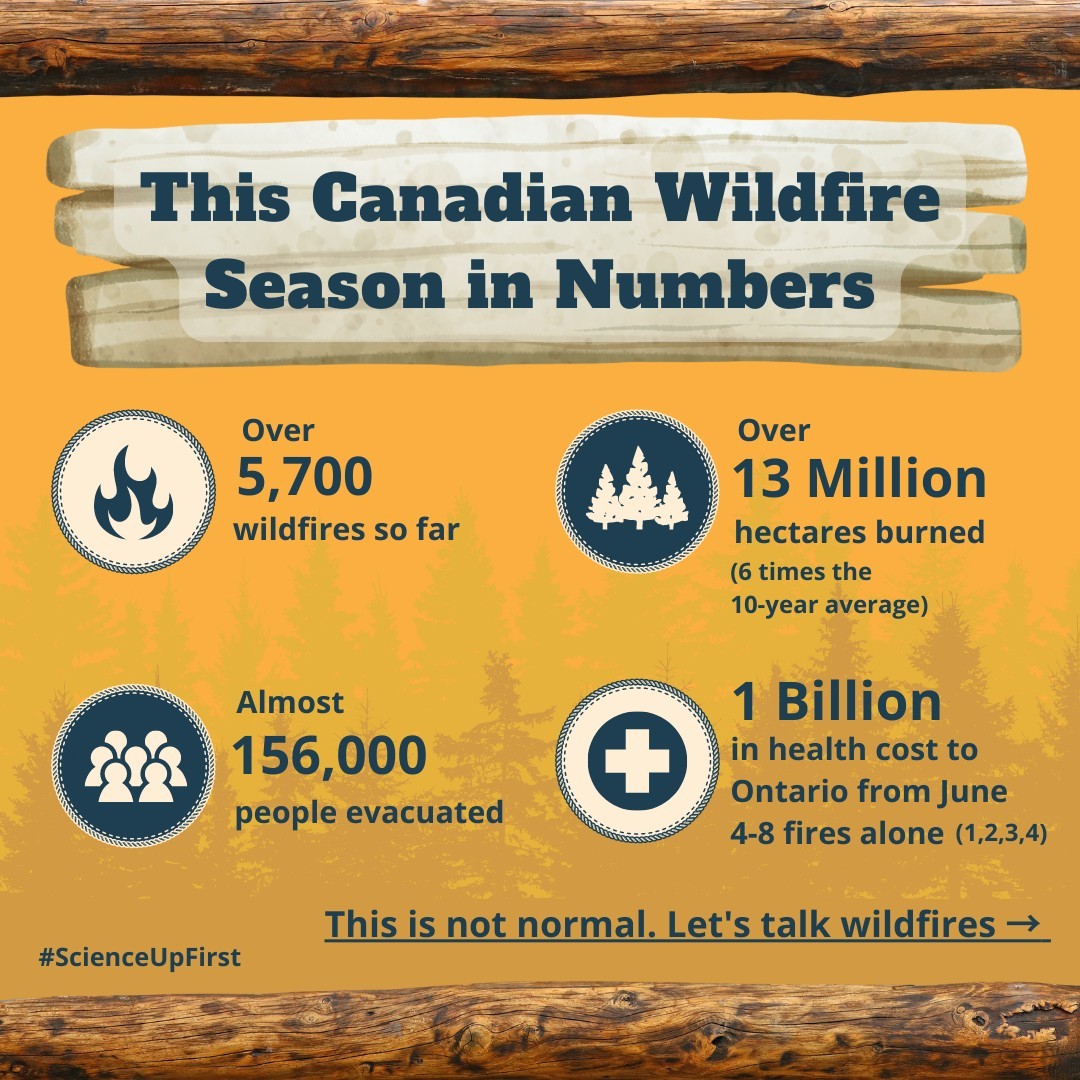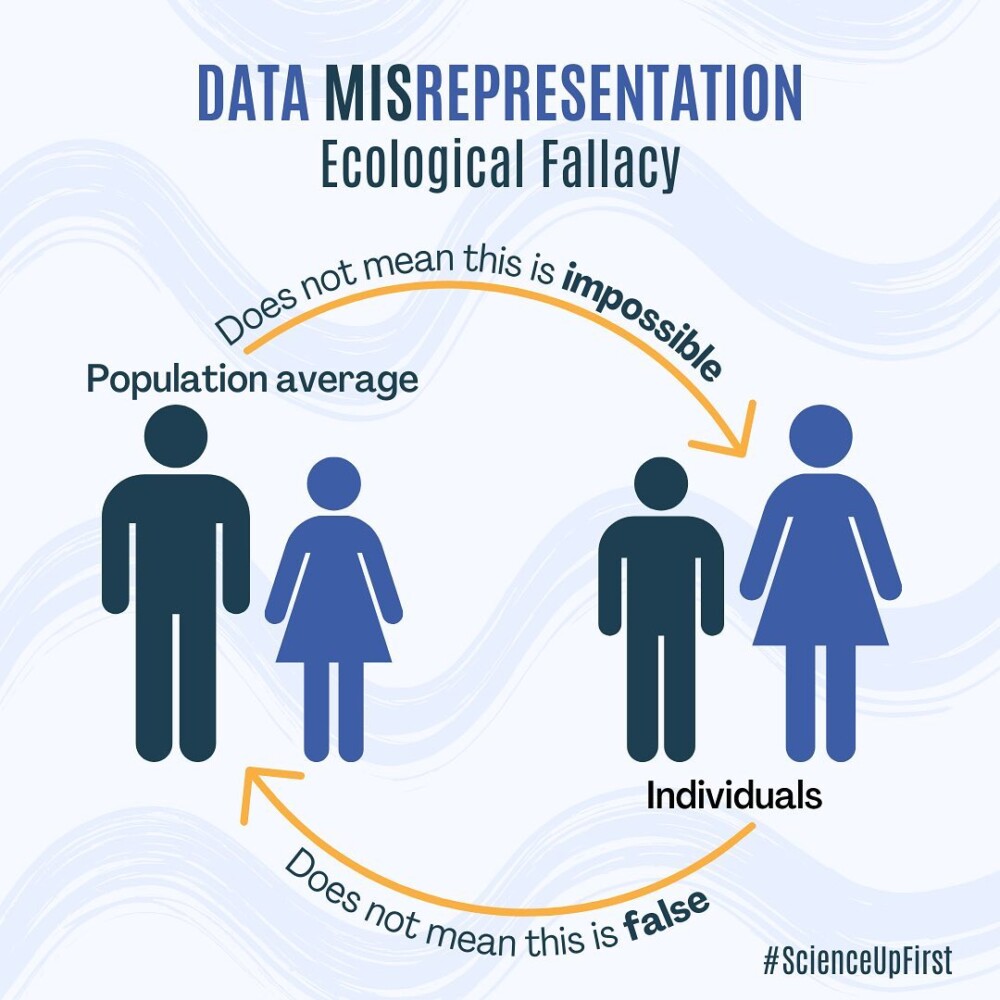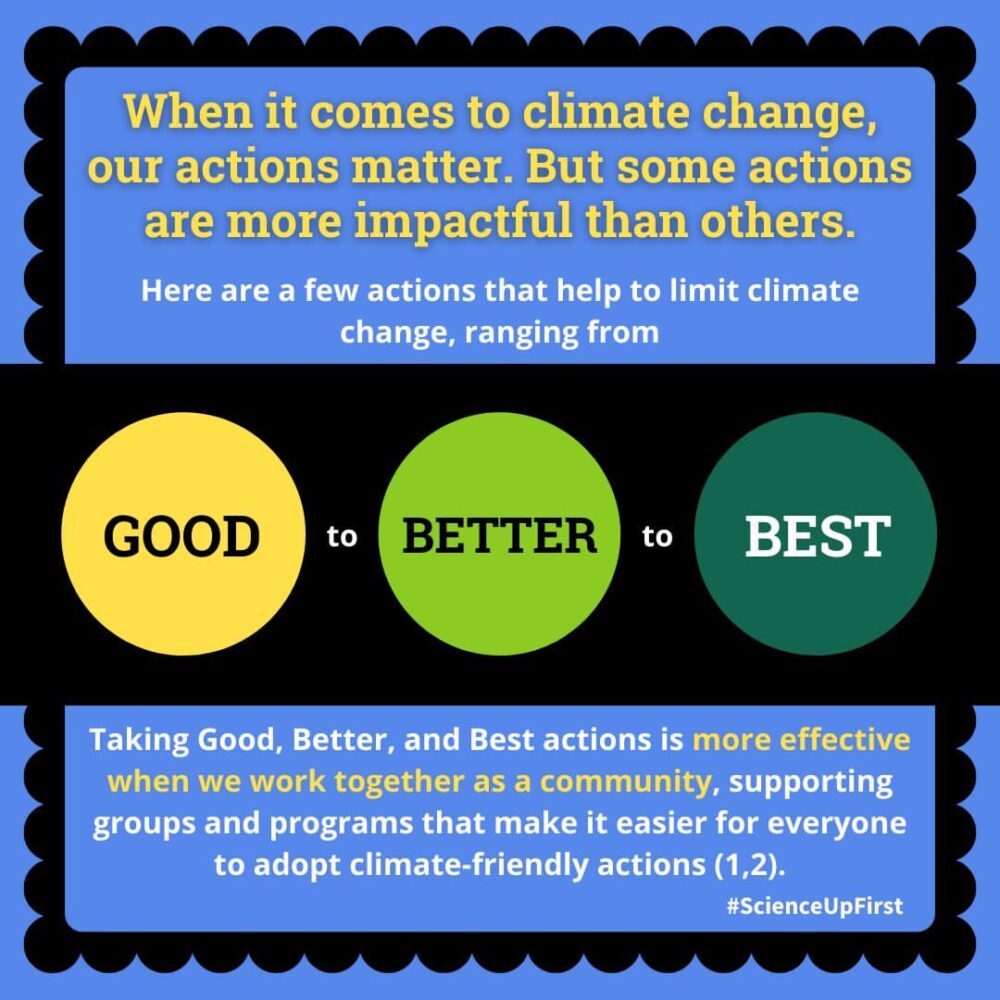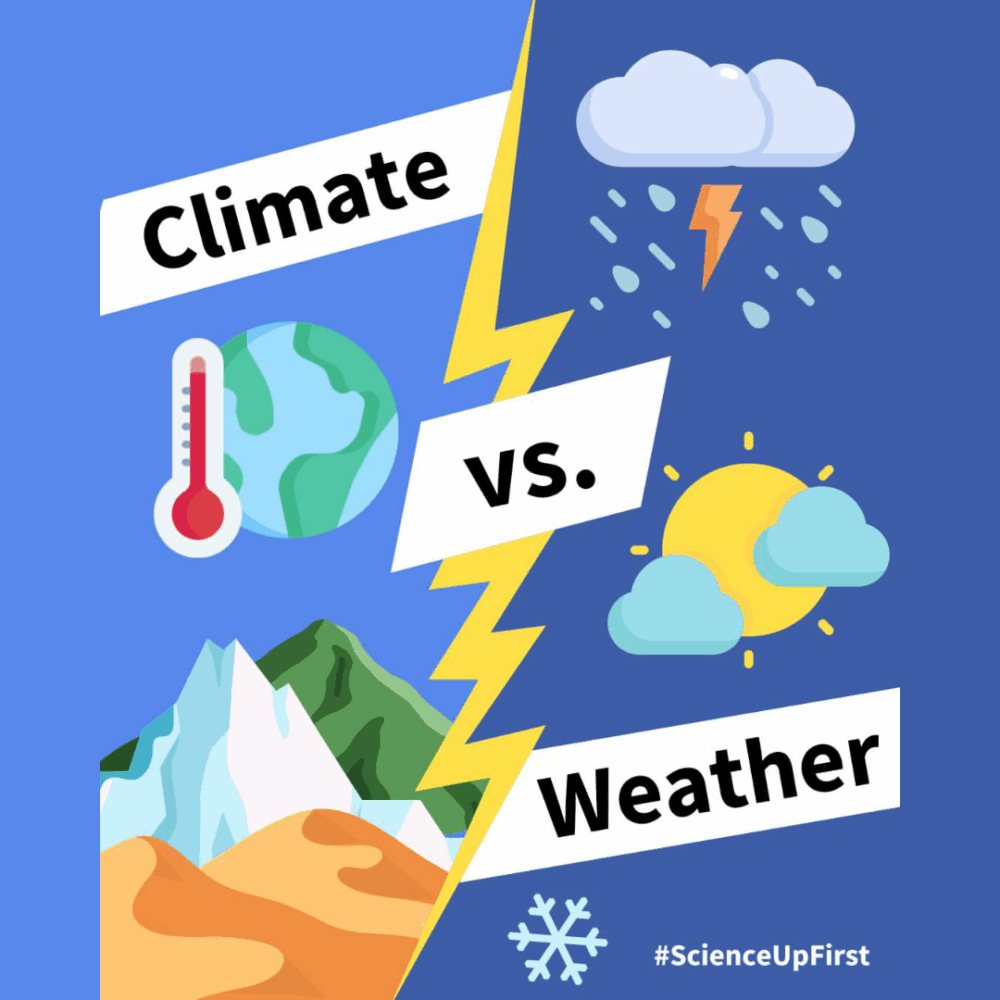





Misinformation spreads faster than wildfires. Make sure you get your facts right. Here are some wildfire basics
Three elements are necessary to create and maintain a fire (8):
- Heat (i.e. energy)
- Fuel (i.e. anything that can burn)
- Oxygen
Removing any of these components will extinguish the fire. For example, water, retardant, or dirt can be used to reduce the temperature or cut the oxygen supply (7).
Now, once a wildfire has ignited, its behaviour depends on three factors (8):
- Fuel properties (i.e., size, arrangement, moisture, quantity)
- Weather (i.e., wind, rain, humidity, temperature)
- Topography (i.e., slope angle, sun’s orientation, obstacles)
While weather is the most variable and unpredictable factor, each can influence how the fire will burn and spread (8).
There are three types of wildfire, though they can occur simultaneously (7,14):
- Ground fires slowly combust the accumulated and compacted dead matter underground (without flame). They can burn for months unnoticed, including during winter (hence why they are sometimes referred to as “zombie fire” (15)).
- Surface fires only burn the top layer of soil and thus are easiest to control.
- Crown fires are the most dangerous and intense, because they burn vegetation up to its very top.
There are a lot of hot takes flying around about wildfires. When in doubt, ask yourself, “Is this right?” before sharing anything. Even better, ask us! We can help.
Share our original Tweet!
Misinformation spreads faster than wildfires. Make sure you get your facts right. https://t.co/qY22zxG0Lj
Questions about claims you’ve seen online? We want to hear them!#ScienceUpFirst pic.twitter.com/duc1sBLYdT
— ScienceUpFirst | LaScienced’Abord (@ScienceUpFirst) August 23, 2023
View our original Instagram Post!
View this post on Instagram
- National Wildland Fire Situation Report | FR : Rapport national sur la situation des feux de végétation
- Fire Statistics | FR : Statistiques sur les feux
- Wildfires in Canada have broken records for area burned, evacuations and cost, official says
- With Canada’s forest fires, the health costs hit home | FR : Feux de forêt et coûts en soins de santé
- Why forests need fires, insects and diseases | FR : Pourquoi les forêts ont besoin des feux, des insectes et des maladies
- Here’s a look at what’s happened in Canada’s record-breaking wildfire season so far
- Fire behaviour | FR : Comportement des feux
- Wildfire Facts
- Canadian National Fire Database (CNFDB) | FR : Base nationale de données sur les feux de forêt du Canada (BNDFFC)
- Forest Fires and Climate Change | FR : Les incendies de forêt et le changement climatique
- Wildfires, Water, and Our Health | FR : Les feux de forêt, l’eau et notre santé
- Wildfire Smoke and Climate Change | FR : Changements climatiques et fumée des feux de forêt
- Peat is burning in wildfires, releasing toxins stored for millennia
- Types of fire
- What are ‘zombie fires’ and are they becoming more common?




